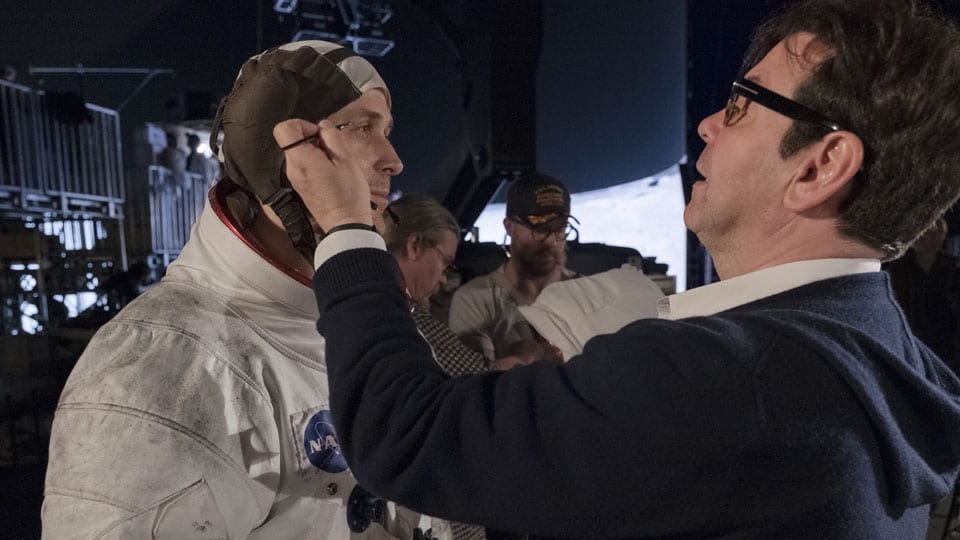
Earlier this month, Jeff Sagansky, the former President of CBS Entertainment and Sony Pictures, gave a blistering speech at NATPE, where he sounded the alarm on the streaming era’s new revenue models for actors, writers, directors, and perhaps most importantly, producers.
In addition to being one of Hollywood’s top former executives, Sagansky is currently a producer and media investor, and he doesn’t like what he’s seeing out there with regard to profit participation, which has been adversely affected by the “cost plus” business model adopted by Netflix and, subsequently, the rest of the entertainment industry.
Sagansky believes that the producer-studio bond has been “irrevocably broken” and he hopes that Congress and the Justice Department will step in to “level the playing field,” a phrase referenced multiple times throughout his speech.
But rather than just give you the highlights, Above the Line reached out to Sagansky, who gave us permission to reprint his speech in full. His words of wisdom can be found below:
If I told you that you were going to create and produce a show that 50 years from now people would still be watching and referencing and enjoying, you would probably tell me that’s one of the reasons that I got into this business to begin with. To create something enduring. Then, if I told you that your show would be licensed and relicensed and seen in every corner of the world in a way that the digital revolution is now making possible, you might start to think, wow, this could change my life. But then, if I told you that you were going to get paid just once upfront — 10 or 20 percent more than your usual producer fee — and would never again get paid for all those billions of views, all that relicensing revenue, all that advertising revenue that was embedded in your great work, you would tell me to take a hike. That this deal was brutally unfair. And yet, everyday, in every part of this town, producers, directors, actors, and writers are being forced to sign these ridiculous deals.
Today, we are going to discuss the ways that producers can advantage themselves in relation to the various buyers of their productions. Given the all-time high demand for TV and streaming shows today — 560 scripted series and even a greater number of non-scripted series — and an estimated $220 billion of worldwide content spend, this should be an easy discussion. This should be the greatest time in the history of our business to be a producer. But the fact is, and why I chose to frame this discussion upfront, is that in my 47 years in our business, I don’t think there is a more rotten time to be a producer in terms of getting paid fairly for the work you are doing.
And, I might add, I can extend these comments to directors and actors, and writers. All the above-the-line talent is facing this same problem.
And everyone here listening might recognize this story. We have all heard it before because history repeats itself (Karl Marx first said this. He probably wasn’t thinking about Hollywood talent at the time), but it’s uncanny how true this is right now. Let me go back to the beginning of our business in the ’50s and ’60s when the copyrights of all the TV shows were owned by the studios and producers, but the three networks that were broadcasting these shows were demanding and getting 90 percent of the ancillary economics.
If the studios and producers wanted to get on the air, they had to give up virtually all back end economics. So, eventually, out of desperation, the producers and studios jointly went to Congress, the Justice Department, and the FCC to address this coercive anti-competitive behavior on the part of the networks. And they succeeded big-time. In 1970, the FCC passed the financial interest and syndication rule, which largely prohibited the networks from airing programming that they had a financial interest in.
I started in the business shortly after that and saw the incredible creativity and success that came out of this Fin Syn ruling as companies like MTM, Spelling, Cannell, Norman Lear, and Viacom, all came into being in this time. Only because the playing field was leveled.
The studios and producers were able to license to the networks the first window of their shows, but then owned the second window and international in perpetuity. the next 40 years after 1970 was truly the golden age of producer ownership, as a series of developments made show ownership increasingly valuable. The rise of cable in the ’80s created another big buyer for off-network programming. The privatization of TV in Europe and Asia in the ’90s created a huge international market for U.S. programs, which were the best in the world at the time. And then the rise of DVD in the late ’90s created yet another revenue stream where the big shows were seeing sometimes $600,000 dollars per episode in DVD sales.
By 2010, successful series were making $1.5 million and more in profit per episode, and producers, writers, directors, and actors were all participating in the fruits of their labors.
Lew Wasserman negotiated the first back end for an actor in 1950 — Jimmy Stewart for Winchester 73, and by the ’70s, the biggest TV and movie stars were participating in these lucrative back ends, as were directors and writers.
Then a neutron bomb was dropped on the business starting in 2010 when Netflix introduced streaming, which became almost immediately successful thanks to net neutrality, but more importantly, because all the studios were licensing their best shows, like Breaking Bad, for relatively modest feeds. Suddenly, the calculus of the TV business changed very quickly.
Soon, every studio/media conglomerate realized that if they didn’t go direct to the consumer, they were sitting on a melting ice cube in the form of their cable channels as consumers were unbundling at a rapid pace — now 5 to 7 percent per year.
The original seven studios that began with Universal in 1912 and the last of which was Disney in 1923, was the organizing structure for the production business. For almost 100 years, the studios and producers shared in the ownership of the shows which they jointly sold to distributors.,
But now, those seven studios are six, and more importantly, five of the six remaining studios — Sony/Columbia being the lone exception — are all part of a streaming platform, which is the revenue growth driver for Disney, Warner/Discovery, Viacom, and Peacock (NBC Universal). These studios are part of big walled gardens where the main master they serve are their streaming arms.
And somehow, they all have quickly adopted the Netflix production model, which demands to own 100 percent of whatever is produced by Netflix Studios “buying out in perpetuity in most cases the producer’s backend up front. So every producer is going to be for hire at a time when the shows you’re creating are going to have a longer life than ever before thanks to the recommendation and discovery tools that are the break and butter of every OTT program service. In the analog world, a show was produced for a network and then would often go back into the vault until it was sold again for a second domestic window or international run. That is no longer the case. In the digital world, it is merely put on a server until the consumer, through word of mouth or by the recommendation engines pointing the viewer in the right direction. Today, we know what every digital consumer watches, [as well as] when, where, and for how long. We have never had this level of information and data since the media business was started. So, is it remotely equitable that the producer gets bought out in perpetuity only because these streamers/studios have tacitly colluded to prevent you from enjoying the backend? Did the Producer’s Guild or Director’s Guild or Writer’s Guild or SAG-AFTRA ever negotiate with these media behemoths the end to more than 50 years of back-end ownership? These are some of the biggest media companies in the world. They can’t afford to share in the profits of all these shows that they have no role in creating?
Initially, during the beginning of streaming, you saw huge buyout premiums that may have, in some cases, come close to approximating the backends for some hit shows. My prediction, and we are seeing it now, is that these buyout premiums are coming down dramatically and further, I predict that these big deals given to the brand-name producers will also disappear as the streamers consolidate and the competitive environment coalesces around three or four big services. If this all sounds familiar, it’s because this is exactly what happened 50 years ago, and whereas 50 years ago you had the producers and studios fighting together today those studios all serve these streaming giants. The producer-studio bond that has served a shared purpose for the last 50 or 60 years has been irrevocably broken. The studios are happy to relegate the creative community to serfdom — give me the best you have and be gone. We don’t want you to share in the longterm benefits of what you have created.
So, we are in a golden age of content production and the dark age of creative profit sharing.
The producers and creators are now having to go it alone, a function of two facts — first, that these streaming services all want to be international in scope, so the streamers want worldwide rights, and second, that as broadcast and cable retreats in importance, streaming commands the great bulk of program dollars, and in an oligopoly, when the principal players all demand and enforce the same model, it is impossible for a producer to break the coercive behavior. The first time this happened 50 years ago, the government had to step un to level the playing field with the Fin Syn rules.
That time has approached again. The creative community — the producers, writers, actors and directors, and dare I say the talent agencies, have to go to the Justice Department and Congress to argue against this anticompetitive behavior. Not an easy task getting all these disparate groups together. But this may be the only way to level the playing field. Now we can talk about other strategies producers should use to gain advantage in this new paradigm.





